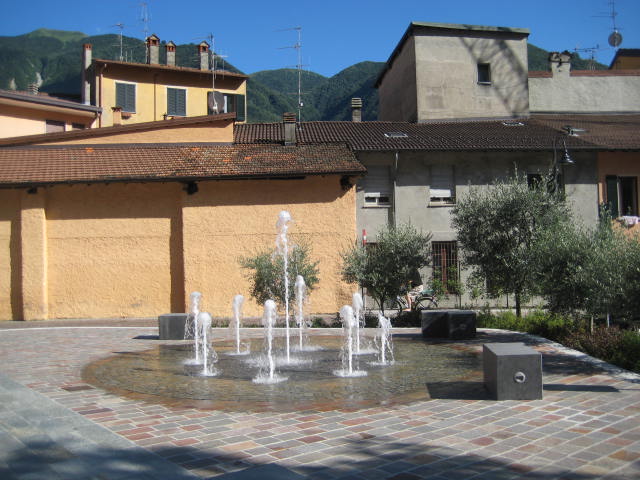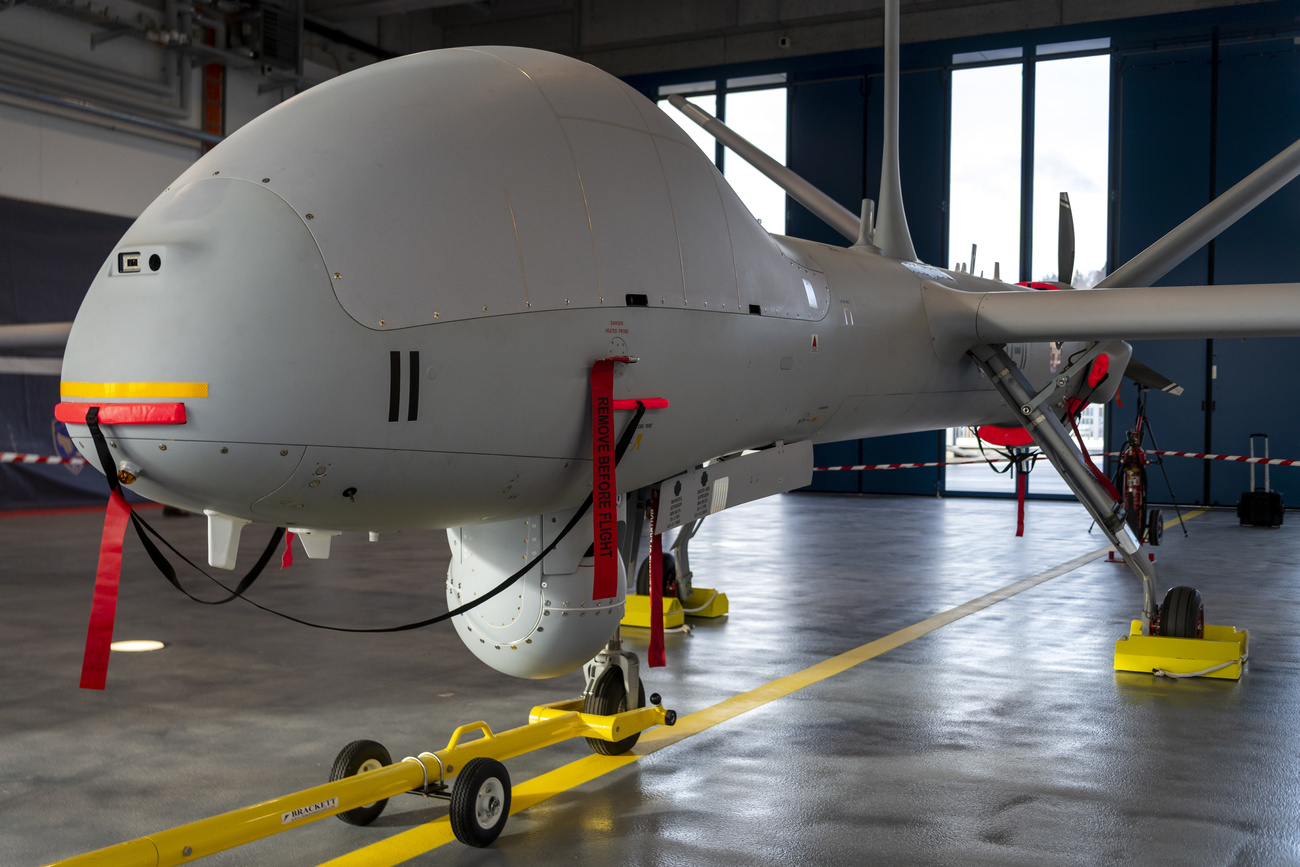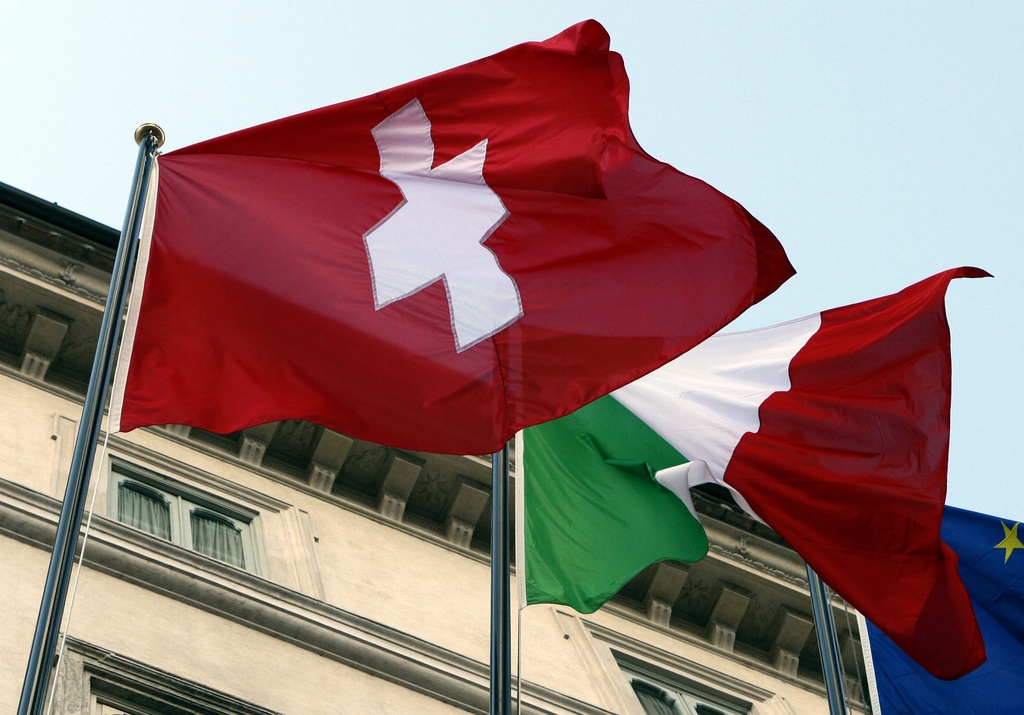Ticino tax threat weighs on neighbouring Italy

More than 50,000 Italians cross the Swiss border daily to go to work. Now a simmering row over distribution of their taxes is undermining goodwill in the region.
Border municipalities in the Italian provinces of Lombardy and Piedmont have been worried since a partial freeze on the repatriation of taxes taken from cross-border workers was implemented last month by Switzerland’s southern canton Ticino.
The Italian communes have come to rely on this tax revenue and they claim the future financing of infrastructure is in danger. Swissinfo.ch travelled to Lombardy on the Italian side of the border to see the effect of Ticino’s policy change.
On a hot August afternoon, Porlezza, with its picturesque setting on the northeast shore of Lake Lugano looks more like a holiday resort. Cars from the Netherlands and Germany are parked in the narrow streets of this small town of 4,500 people.
Mayor Sergio Erculiani gives a tour of the primary school. Strains of violin drift from the music room. He is proud of his commune and the concerted efforts of the past few years to improve its infrastructure and public spaces, and enrich cultural and social activities.
Putting money to good use
“Part of the returned taxes has allowed us to extend and renovate the school, and to build a sports hall,” he explains, careful to illustrate the good use made of the SFr700,000 ($907,000) paid every year by Ticino and transferred back to Porlezza from Rome after deductions.
Not a negligible amount for a small town that wants to boost tourism. The tax take from Ticino added to European Union funds also went towards refurbishing the lake promenade.
Further away at Valmorea, a commune of 2,700 people in the hills of the province of Como, mayor Mauro Simoncini also tries to show that the tax money is not wasted. Here almost the entire working population is employed in Ticino.
The mayor points out many examples of infrastructure financed by the taxes of the cross-border workers.
Driving through the village, he shows off Valmorea’s brand-new community clinic. We take a turn on a small roundabout, inaugurated last year “thanks to money from Switzerland, which made it possible to bring an end to a long series of accidents at this spot”, Simoncini adds.
Close neighbours
Simonici likes nearby Ticino and often goes walking there on Sunday with his wife. He prefers not to comment on the decision of the Ticino local government to freeze half of the proceeds of taxation taken at source from the salaries of cross-border workers.
“The work is in Switzerland. In the region, we don’t have many jobs to offer.”
As a small business owner, the mayor has direct experience. His shipyard has had to let go more than three quarters of his employees and the future remains uncertain.
“Here money doesn’t circulate. No one buys anything,” he says.
Turbulent debate
In the lakeside town of Como, the tone of the local councilor Luigi Bottone is more combative. He wants to organise a meeting of the unions at the beginning of September “to unite our forces and defend ourselves”. Bottone does not know how many of his fellow citizens work in Ticino.
This young coordinator from the centre-right I Popolari di Italia party is a leading voice in the debate about the SFr30 million at stake in the tax row, often responding to the pronouncements of Guiliano Bignasca, head of Ticino’s populist Lega party. The cross-border tax issue is one of Bignasca’s pet campaigns.
“Certain Italian politicians are making the most of this issue for their personal campaigns. In reality only a small number know the names of the relevant Ticino ministers and ever fewer are familiar with the mechanisms of Swiss politics,” a local Italian journalist, who is a specialist on Ticino-Italian tax matters told swissinfo.ch, speaking anonymously.
Fewer unemployed
Claudio Pozzetti does not belong to this category. Advisor to the general council of Italians abroad in Como, he is charged with looking after the interests of Italian workers employed in Ticino. He has closely followed every stage of the ongoing wrangling and knows all the positions of the Swiss government on this affair.
He is also outraged by the “humiliating campaign the cross-border workers have been subject to”, particularly through the controversial poster campaign run by the right-wing Swiss People’s Party portraying cross-border workers as rats.
But he hastens to add: “If these tens of thousands of workers did not have well-paid employment in Switzerland, a large share of them would definitely be unemployed and that would weigh heavily on the small communities which would not have the means to support them.”
Rate cut
It’s not only the freeze which preoccupies the Italian communes. They are also worried about the prospect of Ticino lowering the amount of tax being repatriated.
Fixed at 38.8 per cent in a 1974 bilateral treaty, the Ticino government and the parties of the right are calling for a reduced rate, similar to the one applied with Austria.
Vienna only pockets 12.5 per cent of the taxes paid by its citizens in Switzerland. Long resistant to the idea of modifying the treaty, even Swiss Finance Minister Evelyn Widmer-Schlumpf has now admitted that the question deserves closer scrutiny.
Which is enough to make the home communes of the cross-border workers worry. “Rome is multiplying budgetary cuts and the debt plan voted in a few weeks ago by the Italian parliament does not bode well. Which is why we are counting more than ever on the money that comes to us from Switzerland,” Simoncini said.
The bilateral treaty concluded between Switzerland and Italy on the financial compensation of the border communes dates from 1974.
It requires that 38.8% of the tax taken at source from the salaries of cross-border workers, is transferred by Ticino (and the canton of Valais) to Italy.
For their part, the communes do not see their share of this levy until two years later. Accordingly, they have just received the 2009 rebate.
The 340 so-called border communes in Lombardy and Piedmont are located within a 20 km belt along the Ticino border.
Some 50,500 workers from Italy cross the border daily to work in Ticino.
A significant proportion of this workforce is unqualified and the salaries and conditions for these workers, often women, are sometimes below agreed industry standards.
(Translated from French by Clare O’Dea)

In compliance with the JTI standards
More: SWI swissinfo.ch certified by the Journalism Trust Initiative













You can find an overview of ongoing debates with our journalists here . Please join us!
If you want to start a conversation about a topic raised in this article or want to report factual errors, email us at english@swissinfo.ch.